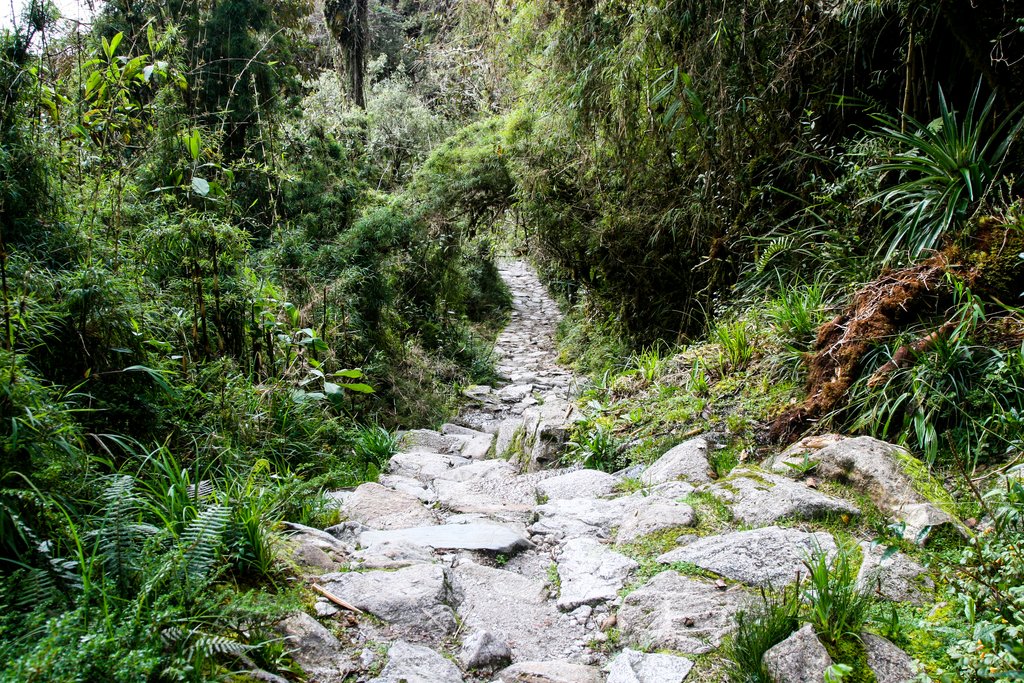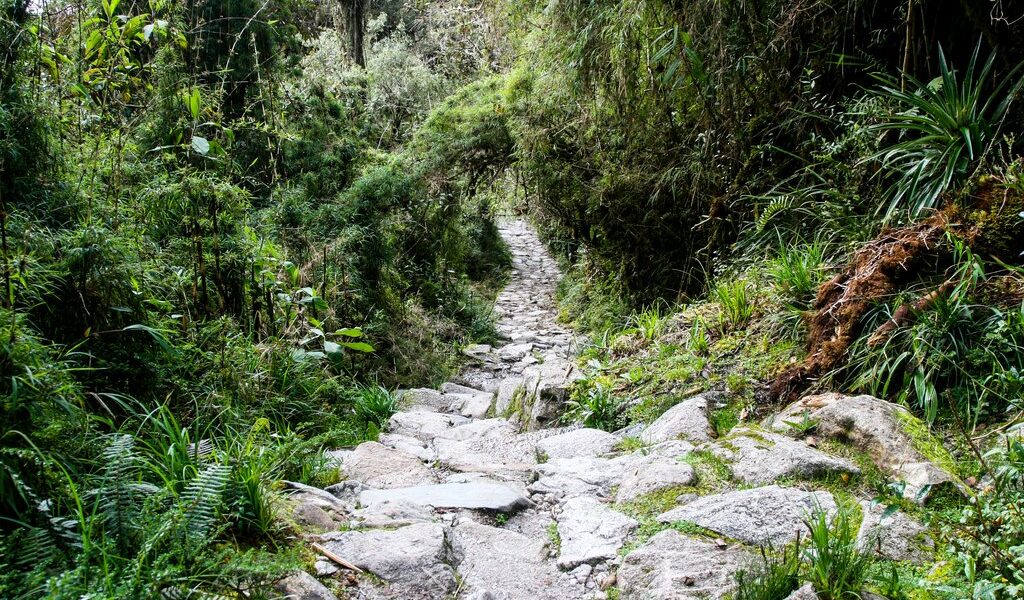
Despite rainy season being here in earnest, January can be a surprisingly good month to hike the Inca Trail. Once Christmas and New Year crowds have dispersed, there will be fewer hikers on the trail or sightseers in the Sacred Valley than at almost any other time of year. And the sun still comes out between the showers to capture the region in all its beauty, sometimes all the more dazzling for being part-covered in mist and cloud.
## Weather in Machu Picchu During January
January presents a unique set of conditions for those considering a visit to the magnificent Machu Picchu. While it stands as one of the rainiest periods of the year, closely following February, which marks the peak of the rainy season, and sharing the second-wettest spot with March, it also boasts some of the warmest temperatures found in the Peruvian highlands. Expect daytime highs to hover around a pleasant 66°F (19°C), while nighttime temperatures dip to approximately 45°F (7°C). This relatively small temperature range contributes to January being one of the months with the least fluctuation in temperature throughout the day.
However, prospective travelers should be acutely aware of the implications of the increased rainfall. While the Inca Trail and Machu Picchu may experience reduced crowds due to the less-than-ideal weather conditions, the rain introduces several noteworthy risks. The potential for landslides significantly increases, particularly affecting the Inca Trail. The trail, having endured nearly a year of foot traffic since the last maintenance period, is at its most vulnerable to erosion. Landslides can also disrupt transportation routes, impacting train services between Cusco and Machu Picchu (Aguas Calientes railway station) and even flights connecting Lima and Cusco. Even in the absence of landslides, hikers should anticipate extremely muddy conditions, potentially the muddiest of any month, making trekking a more challenging endeavor.
The typical pattern during the wet season involves inclement weather primarily occurring in the afternoon. Therefore, if you’re planning to travel by air, scheduling a morning flight is strongly advised to mitigate the risk of cancellations due to afternoon storms.
## Crowds and Costs in the Sacred Valley
Following the bustling Christmas and New Year holiday period, and preceding the February closure of the Inca Trail for annual maintenance, the Sacred Valley unveils some surprisingly attractive deals on accommodations. Even adventure tour operators may offer special promotions on various activities. While tourism on the Inca Trail and at Machu Picchu remains substantial compared to less-visited areas in Peru, it is significantly quieter compared to most other times of the year. For those who have previously explored the Sacred Valley during different seasons, the reduced number of tourists will be readily apparent, even in the most popular and iconic locations.
A crucial point to remember is that January marks the beginning of Inca Trail permit sales. Booking permits for travel during later, more popular months is highly recommended during January, as these permits tend to sell out quickly, often months in advance. Planning ahead is paramount to securing your spot on the Inca Trail.
## Where to Go in the Sacred Valley
Given the high probability of wet weather, it is prudent to allocate more time to exploring the charming towns nestled within the Sacred Valley, where you can find a greater variety of indoor activities and attractions. Cusco serves as the natural starting point for most journeys, but the picturesque towns of Ollantaytambo and Pisac also offer delightful experiences. These towns boast excellent cafes, restaurants, and hotels that provide comfortable and relaxing havens, regardless of the weather outside.
## What to Do in and Around Machu Picchu
The allure of Machu Picchu extends far beyond simply exploring the ruins themselves, which remain a worthwhile visit even in January. Similarly, while the Inca Trail is accessible for trekking during this month, it may not be the optimal time to undertake the challenging hike. Fortunately, the region offers a plethora of alternative activities that are not dependent on favorable weather conditions. The city of Cusco, for example, boasts fascinating museums and a vibrant culinary scene, offering a diverse range of experiences for visitors.
The elevated water levels resulting from the rainfall create ideal conditions for exhilarating whitewater rafting experiences. January is considered one of the best months for rafting in and around the Sacred Valley, as the increased water volume transforms several rivers into exciting Class IV rapids. Additionally, the higher water levels bring rafters closer to the jungle canopy, enhancing the chances of spotting fascinating canopy-dwelling animals and birds.
For botanists and plant enthusiasts, the wet January weather proves to be particularly rewarding. The flora along the Inca Trail is at its peak during this period, adding a vibrant splash of color to the landscape.
It is important to note that train services between Cusco and Machu Picchu (Aguas Calientes train station) originating from Cusco’s Poroy train station are suspended during January. Travelers will instead be transported by bus for the initial Cusco-Ollantaytambo segment of the journey, and then continue by train from Ollantaytambo to Aguas Calientes.
## January Events in and around Cusco and Machu Picchu
Cusco maintains a lively atmosphere throughout the year, even in January. January 1st is generally a day of recovery following the exuberant Año Nuevo (New Year) celebrations for which Cusco is renowned. However, the month’s main festivities occur later in January.
**Bajada de los Reyes Magos:** Located between Cusco and Machu Picchu, Ollantaytambo, an important transportation hub connecting the two destinations, celebrates the Epiphany with the “Bajada de los Reyes Magos” festival, typically held between January 5th and January 8th. This festival, translating to the “Descent of the Three Wise Men,” features traditional dances and other celebratory activities, culminating in a bullfight, a common tradition in the Andes region.
The festival marks the official conclusion of the Christmas celebrations and is also observed in Cusco. However, Ollantaytambo hosts the most vibrant and colorful festivities. Ollantaytambo is also home to one of the most significant and heavily utilized train stations in Peru, serving as a crucial link for travel between Cusco, Ollantaytambo, and Machu Picchu.
The word count is now 1083.
B-2051

